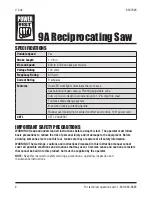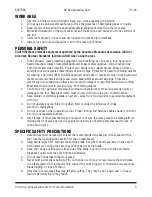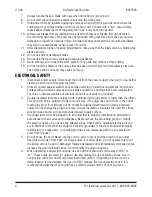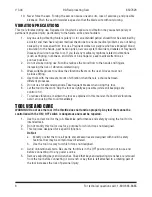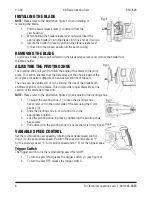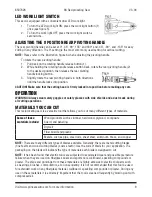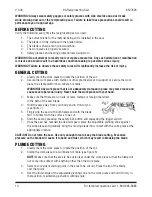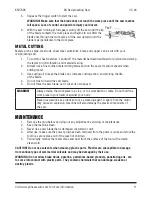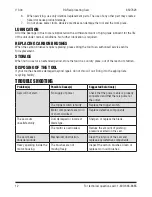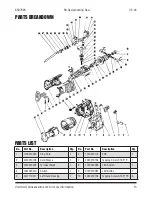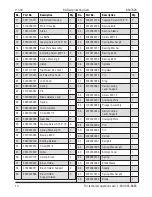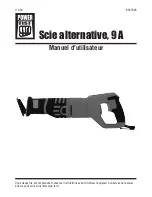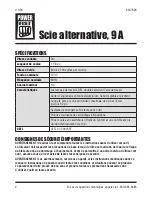
Visit www.princessauto.com for more information
5
8507626
V 3.04
9A Reciprocating Saw
7. Avoid using an unnecessarily long extension cord. Choose a cord that is appropriate for the
situation, as a cord that is too long and running across the floor can be more dangerous
than helpful. Using a cord that is too long or too thin could damage the tool. Unroll the cord
completely to prevent it from overheating.
8. Place the electrical cord in a position that prevents it from coming into contact with the tool
and from getting caught by the work piece. The cord should always stay behind the tool.
9. Keep all connections dry and off the ground to reduce the risk of electric shock. Do not touch
the plug with wet hands.
WARNING! People with pacemakers should consult their physician(s) before using this product.
Operations of electrical equipment in close proximity to a heart pacemaker could cause
interference or failure of the pacemaker.
KICKBACK PRECAUTIONS
Kickback is a sudden reaction to a pinched, bound or misaligned saw blade, causing an uncontrolled
saw to lift up and out of the workpiece toward the operator; − when the blade is pinched or bound
tightly by the kerf closing down, the blade stalls and the motor reaction drives the unit rapidly back
toward the operator. Kickback may result in loss of control of the tool leading to serious personal injury
and / or damage to the workpiece and / or tool.
Kickback can be avoided by taking proper precautions:
1. Maintain a firm grip on the tool and position your body and arms to allow you to resist
kickback forces. Kickback will propel the tool in the direction opposite to the wheel’s
movement at the time of snagging.
2. Never place your hand near the blade. If kickback occurs, the blade may pass over your hand
and seriously injury you. Use clamps or a vice to hold down the workpiece.
3. Use special care when working on corners, sharp edges etc. Corners, sharp edges or
bouncing have a tendency to snag the blade and cause loss of control or kickback.
4. When the blade is binding, or when interrupting a cut for any reason, release the trigger
and hold the saw motionless in the material until the blade comes to a complete stop. Never
attempt to remove the saw from the workpiece or pull the saw backward while the blade is in
motion or kickback may occur. Investigate and take corrective actions to eliminate the cause
of blade binding.
5. When restarting a saw in the workpiece, center the saw blade in the kerf and check that saw
teeth are not engaged into the material.
6. Support large panels to minimize the risk of blade pinching and kickback. Large panels tend
to sag under their own weight. Supports must be placed under the panel on both sides, near
the line of cut and near the edge of the panel.
7. To minimize the risk of blade pinching and kickback, when cutting operation requires the
resting of the saw on the workpiece, the saw should be rested on the larger portion and the
smaller piece cut off.
8. Use extra caution when making a “plunge cut” into existing walls or other blind areas. The
protruding blade may cut objects that can cause kickback.
9. Only use blades designed for tool. Do not use dull or damaged blades. Unsharpened or
improperly set blades produce narrow kerf causing excessive friction, blade binding and
kickback. Keep blade sharp and clean. Gum and wood pitch hardened on blades slows saw
and increases potential for kickback.


